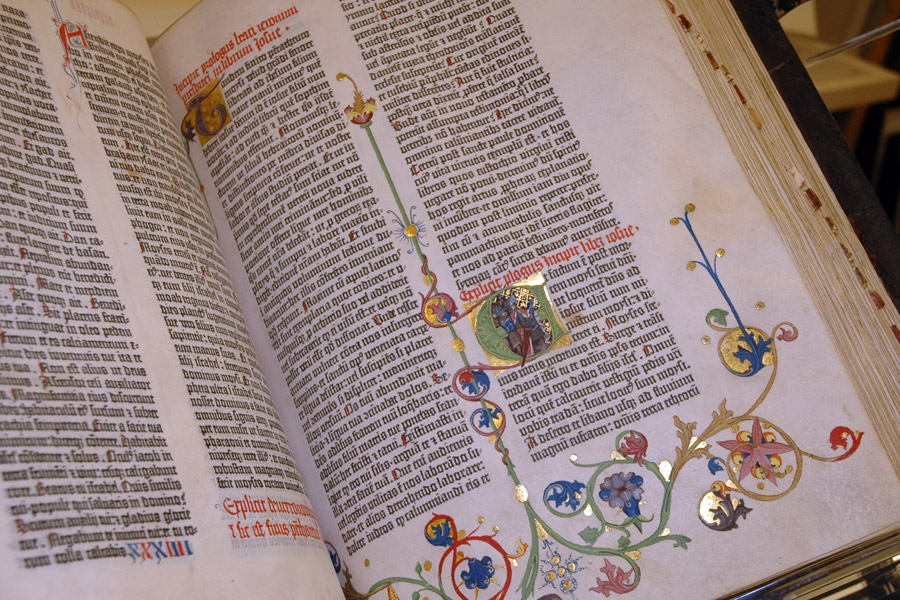Posted on Wed., Aug. 17, 2011 by

The Gutenberg Bible's text, printed with movable type, resembles the calligraphy of medieval scribes who copied books by hand before Johann Gutenberg revolutionized the printing process. The decorative illuminations were added by hand after the pages were printed. The page opening shows the first chapter of the Book of Joshua.
Incunables (or incunabula) are books printed before 1501, in the infancy of printing. The term, from Latin, means literally "swaddling clothes." Johann Gutenberg of Germany is credited with inventing the basics of printing in the West in 1440, and 15 years later he printed massive copies of the Latin Vulgate. Only about 48 copies of the Gutenberg Bible are known to exist today, 12 of them on vellum (animal skin).
The Huntington's collection of more than 5,200 incunables is second only to that of the Library of Congress in the United States, and among the top collections worldwide. Part of the fame of The Huntington's copy of the Gutenberg Bible is that Henry Huntington paid $50,000 for it in 1911, then the highest price ever paid for a book.
While Huntington visitors have long admired the Bible on display in the Library Exhibition Hall, few may realize that it is in two volumes—while one is on display, the other is at rest in an acid-free archival box in a vault. Recently the two volumes switched places as part of a regularly scheduled conservation rotation intended to minimize pressure on the binding. Pages are also turned in all books at regular intervals to minimize light exposure. For the next 18 months, Library visitors will be seeing volume one, comprising the Old Testament from Genesis through Psalms. They'll also be seeing a new custom-made Plexiglas cradle designed to support the 35-pound book gently but firmly.

Lauren Tawa checks the back of the cradle. The raised and recessed areas in the cradle's design support the weight of the Gutenberg Bible while protecting the brass ornamentation on the book's cover from direct contact.
"I spent a lot of time just looking at the Bible and admiring it before I measured it for a new cradle," says exhibition designer Lauren Tawa, who prepared the volume for display. "I have such a high regard for the workmanship."
Cradle is an apt term for the device supporting a book that dates to the infancy of printing. Tawa's custom design includes recessed areas that accommodate the brass ornamentation on the elaborately tooled leather. The two volumes are not the same size, so before the switch Tawa decided she needed to replace the support that had been used in previous rotations. In its own way, the craftsmanship of the new cradle is worthy of the treasure it contains.
If you can't get over to The Huntington any time soon, be sure to check out photos of Tawa's handiwork on the Huntington's Flickr site. And stay tuned in about 18 months, when the volumes will be interchanged again.
Matt Stevens is editor of Huntington Frontiers magazine.